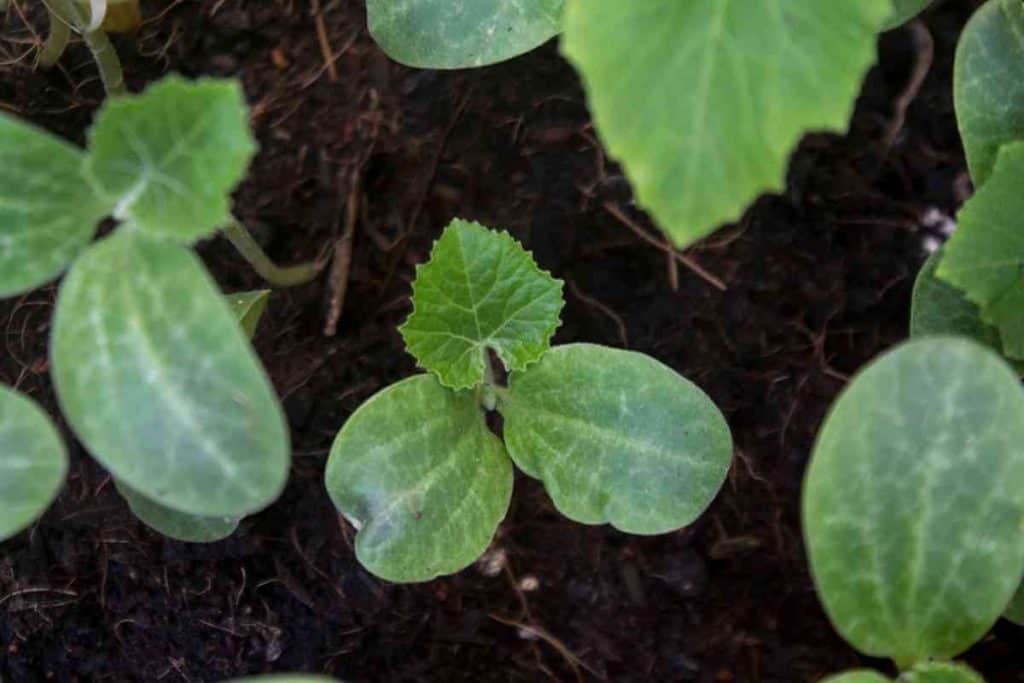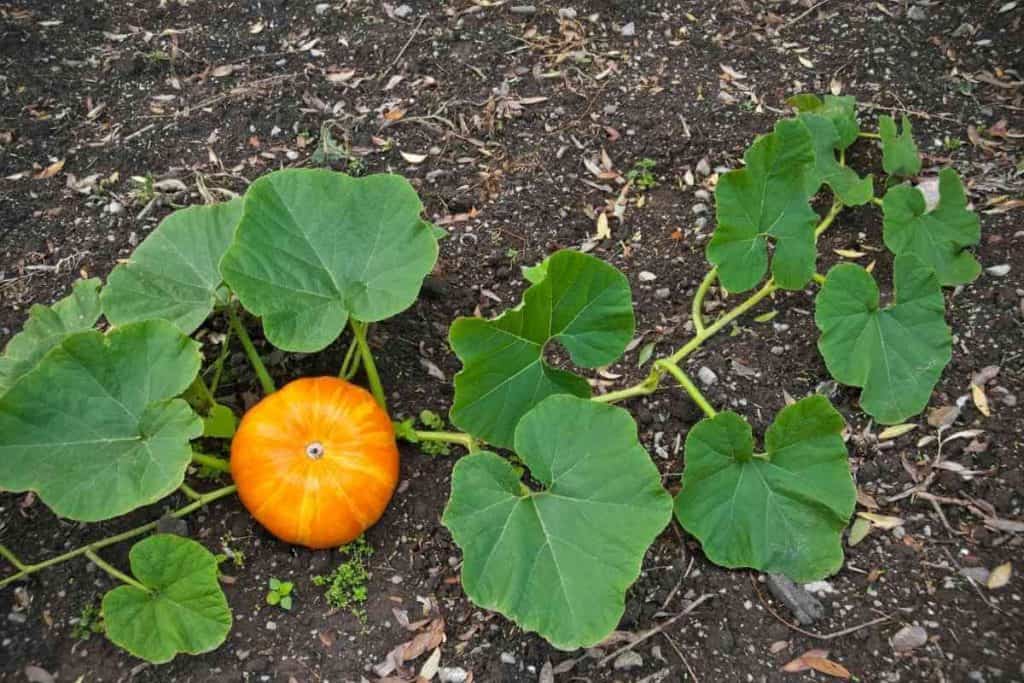Every plant has different stages of growth, and you have to understand how they grow so you’ll know what to expect when growing the plant. But what about pumpkin? What are the different pumpkin growing stages?
Pumpkin's growth cycle starts by planting the seed into the warm ground – and after the seed receives adequate nutrients, sunlight, and water, it sprouts out of the soil and then starts to blossom.
The female blossom produces a green pumpkin,while a male blossom produces an orange pumpkin.
In this, we list the 7 major growing stages of pumpkin as well as the best time to grow pumpkins.
Let’s get started!
Table of Contents
When Is the Best Time to Grow Pumpkin?
Pumpkin is mostly eaten as a winter food and should be planted in the summer months (from early May through June.
But this also depends on the variety of pumpkin you want to grow. Some pumpkin varieties take about 85 days to mature, while others may not reach maturity for 120 days. It is, therefore, logical to plant those with 120 days period of harvest early.
See Also: Different Lavender Growing Stages
December or January is the best time to get started for an autumn harvest.
Pumpkin Growing Stages

Below are the different growing stages of pumpkin that you should know before growing pumpkin plants:
Stage 1: Planting of the seed
The first step to growing a healthy pumpkin is planting the seeds, which can be planted directly into the garden about 2 weeks after the last frost of the season.
Stage 2: Germination
Pumpkin seeds usually take about 8 to 10 days to germinate if the soil is warm and may take more time when the soil is cold.
The seedlings usually come out of the soil with the seed shell attached to the tip of the leaves.
Two leaves, known as seed leaves or cotyledons, appear first (false leaves), and 5 days later or after 1 week, the true leaves begin to emerge.
Stage 3: Growth of the vine
Pumpkin vines are the stem-like structures attached to the main stems. They grow up to 15cm every week if the plant is provided with adequate water and sunlight.
The leaves of these vines can be up to 10 to 20 feet, depending on their variety. For the proper growth of the vine, the soil should be watered adequately, avoiding the leaves in order to prevent infection.
See Also: Pumpkin Companion Plants
Stage 4: Flower development
Pumpkin flower development usually occurs from 8 to 10 weeks after planting. The flowers are bright yellow in color with a long stamen in the middle.
The male flowers appear first, followed by the female flowers 10 days later.
At this point, you can start feeding the plants with liquid food after two weeks to ensure healthy growth.
Stage 5: Pollination
The male pumpkin flower produces both pollen and nectar, which is highly sought after by bees.
So, after extracting the nectar from the male and picking up pollen, the bees move to the female flower, where it drops some of its nectar and after which pollination is complete.
Therefore, pumpkins are insect-pollinated.
Stage 6: Fruit development
After pollination is completed, it begins to pave the way for the development of fruits.
It usually takes about 44 to 45 days for a baby pumpkin to fully grow and start producing fruits after flowering.
7. Harvesting
Harvesting is the last stage of pumpkin growth. Your pumpkins are ready to be harvested when the vines start to turn pale brown and wither.
You can also tell if a pumpkin is ready to be harvested by tapping on the outside of the pumpkin. If it gives off a hollow sound, it is ready.
See Also: Different Broccoli Growing Stages
Why Do Pumpkin Flowers Fall Off?

When flowers or baby gourds get too hot, they tend to drop. And if they don't drop eventually, they cease to grow.
To grow a healthy pumpkin plant, water profoundly and water even more during sunny days, give them enough sun and space, control pumpkins' pests and disease, and also avoid pinching them off roughly as it may cause them to stop growing.
Practice all these adequately with consistency and watch your pumpkins grow healthier.
Frequently Asked Questions
How do I identify pumpkin seeds?
Pumpkin seeds are usually flat, oval, and possess a dull color.
When is curing carried out?
Curing is carried out after harvesting. It is simply just leaving the pumpkins out in a sunny spot for about 2 to 3 weeks to also harden the shell and ensure longer shelf life.
How can I store my pumpkins after harvesting?
Pumpkins can be stored in bags after they're cured. They should also be stored in a cool, dry, and dark place in bags that are not air-tight to allow enough air to pass through them. Anyone with signs of moisture should be quickly discarded.
How can you tell if a pumpkin flower is pollinated?
In the morning, when the blossoms are open, snip a male blossom from the vine and break away its petals to reveal the anther. Gently dab pollen over several female flowers, then try it with a different flower.
How long do pumpkins take to grow after flowering?
It takes pumpkin between 45 and 55 days to grow to maturity after successful pollination.
How do you tell if a pumpkin is male or female?
You can tell if a pumpkin is male or female by examining the first flowers that grow on the pumpkin vines, which are male blossoms, compare their appearance to the female blooms that grow later. Both male and female pumpkin flowers are held atop a stem; however, you will notice a slight swelling on the stem of female blooms just below the flower.
Should I cut off dying pumpkin leaves?
It’s not advisable to cut off dying pumpkin leaves as this can expose the plant's vascular system to bacteria and viruses.
What to put under pumpkins while growing?
You can place a piece of cardboard or wood under your pumpkin while it’s growing. This will help to elevate the plant off soggy soil in order to prevent rot. It’s also advisable to water your pumpkins near the base of each plant and avoid watering over the whole patch.
Read Also: Different Asparagus Stages of Growing
How do you know when pumpkins are ready to be picked?
When a pumpkin is ready for harvest, it will be fully colored, and the rind will be firm too. You will also know that the pumpkin is not ready to be picked if your fingernail easily pierces the skin or creates a hollow in it.




